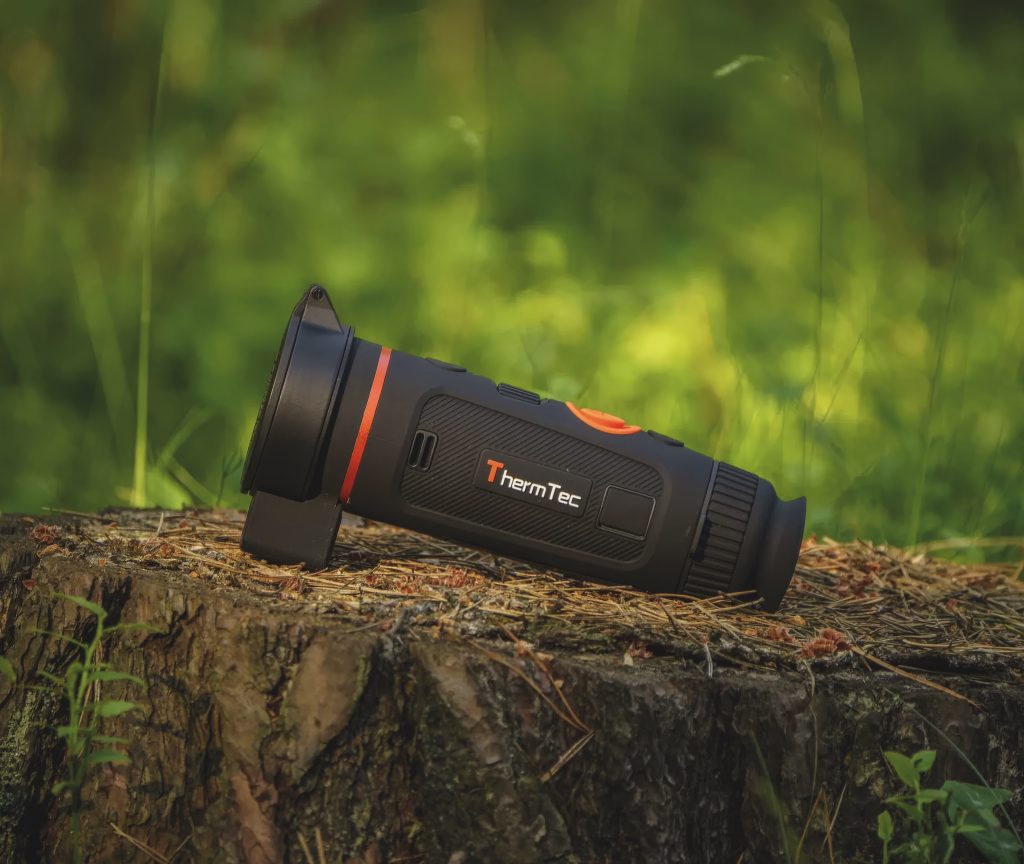Win CENS ProFlex DX5 earplugs worth £1,149 – enter here
The risks of a dirty gun
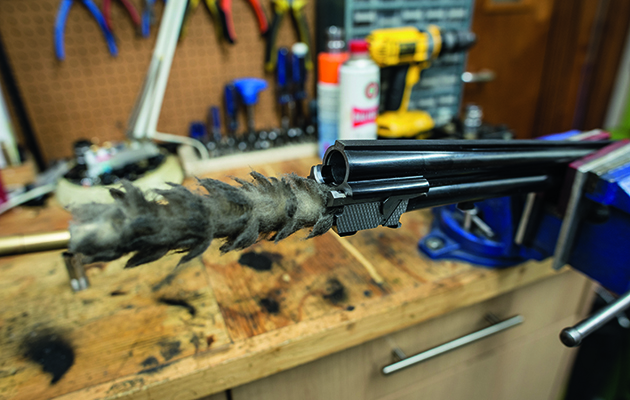
A shotgun is an investment that needs to be cared for to look beautiful, but also perform to its full potential. So where do you begin? Does it need to be cleaned after every outing or just when it’s starting to look a bit ropey? What products are best and ultimately, what’s the worst that can happen if a shotgun isn’t cleaned regularly?
Tom Heapy regularly receives neglected shotguns into the armoury at Edgar Brothers. He then has the tricky task of repairing damaged shotguns, many of which would have been fully operational had they been given the right aftercare.
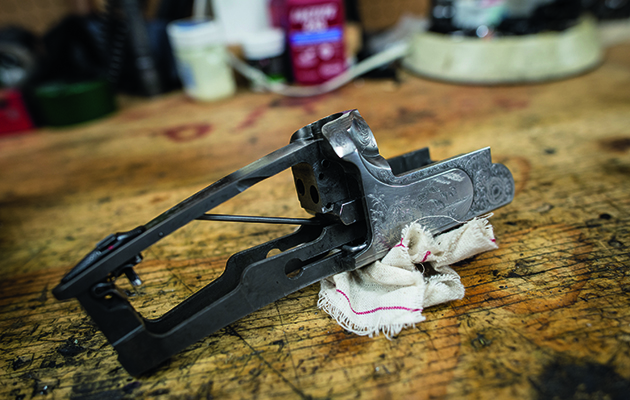
The first step is to strip the firearm in accordance with the manual
Why do you need to clean a shotgun?
“A shotgun is essentially a heat engine,” Tom explains. “When a cartridge is fired, it generates heat which attracts lots of dirt and carbon which can cause all kinds of corrosion and wear problems when it dries. Ultimately you need to remove the dirt from the heat engine before the corrosion causes serious damage to the shotgun.”
While all shotguns attract dirty residue, the design often dictates where on the gun build-up is likely to form. Semiautomatic shotguns have a lot of excess carbon particulates and dirt circulating through the inner workings, which if not cleaned properly, can lead to corrosion. Tom adds: “With a semi-automatic it uses the gas, alongside power and pressure, to cycle the gun. What you find is a lot of muck and carbon joins the gas and enters into the action and the working parts of the gun. If you’re firing multiple rounds, a lot of gas and dust is cycling through which leaves deposits on the metalwork and pistons. On an over-and-under, the barrels and the chamber face get really grimy, but the trigger group not as much because there isn’t that carbonated gas passing through the workings.”
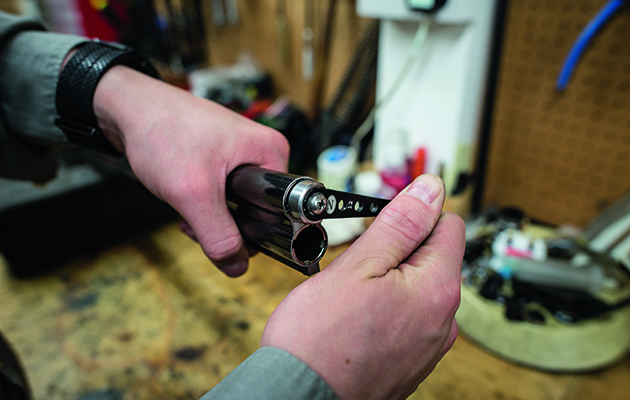
Always remove the chokes before you clean the barrel, or you could find they get rusted in
Carbon build up and corrosion
Through his job with Edgar Brothers, Tom has witnessed first hand the damage and destruction that the big “C” can cause to shotguns. There are also a few recurring problems he encounters, that are caused as a result of carbon build up and the dreaded corrosion. “The biggest thing we see on an over-and-under shotgun is the gun becomes very loose. As you open up the lever, push it to the side and open the barrels, they just drop because of the wear on the hinge pins and the parts rubbing together. I also see a lot of problems with firing pins breaking because of the pressure and the stickiness of these parts trying to move in a dirty environment. In a semi-auto, most of the calls we get are about a stuck piston and that’s obviously the dirtiest part because that’s where the gas goes. When carbon rests it sets solid as a rock that needs to be chipped or filed off. It stops the piston working completely in the gas lock and if that can’t move then the gun’s not going to operate.”
Damage limitation
Fortunately, in most cases but not all, the damage is rectifiable. But why run the risk, when a couple of simple preventative measures will keep a shotgun away from the repair shop and out on the field? Tom suggests that a quick clean after every use will keep your shotgun shooting smoothly for years to come. He said the first step is to field strip the firearm in accordance with the manual. “All manufacturers are aware of the issues surrounding bad maintenance,” he comments, “so I always direct people to their specific manual because there is always useful information in there and they will give specific field strip directions.”
Once it’s stripped down, Tom recommends using a gun cleaner and really taking the time to scrub through the shotgun, making sure to remove all the residue sitting in the barrels. With so many different products on the market, it can be quite overwhelming, however, Tom recommends Hoppe’s Elite Gun Cleaner. “I use this stuff all the time and I highly recommend it. It’s nontoxic, biodegradable and has no smell. A lot of products have a really strong acrid smell which this doesn’t at all.”
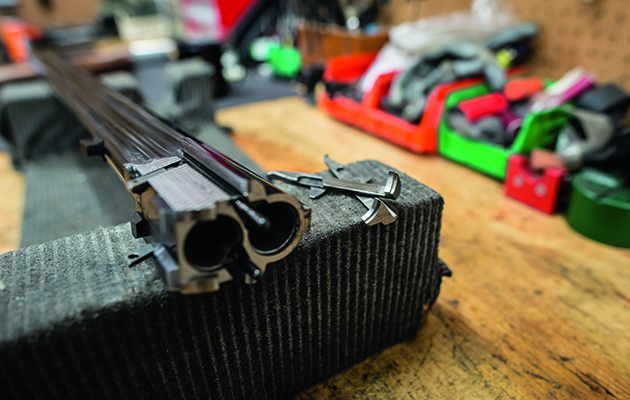
Take the time to scrub through the gun, making sure to remove all the residue in the barrels
How to clean semi-autos
For semi-automatics in particular, Tom suggests using CZ For Gun, which is sprayed from the can as a mist. “The CZ cleaner is perfect for trigger groups because it comes out with a bit of pressure with the air blast and it helps to lift off the dirt,” he says.
After a thorough clean, the next step is applying oil. “The real key to proper maintenance is in the oiling down,” says Tom. He continues: “I always use Ballistol Universal Oil in the workshop because again it’s friendly to the environment and works really well. You need only the smallest amount on an oily rag and literally just wipe it all over the gun once it’s been cleaned. This puts a very thin barrier layer of oil over the barrels and the working parts, which protects the gun from the outside environment and provides a boundary lubrication. It also helps you next time. Say you’ve got a thin layer of oil over the gas system, when you come to wipe it off at the end of a shoot, the dirt should just be sitting on top of the oil and will come off with a clean rag.”
Don’t go over the top
Although it may be tempting to use more products in a bid to keep the shotgun in tiptop condition, this could be doing more harm than good, as Tom explains. “Some people go over the top with cleaning and will use loads of grease. The problem is the grease attracts dirt and forms a grinding paste. By trying to look after the gun, you can make matters worse, so in this case less is more. Grease in certain areas is beneficial so use a little on the hinge-pins, the locking block and the barrel catch, but very sparingly.”
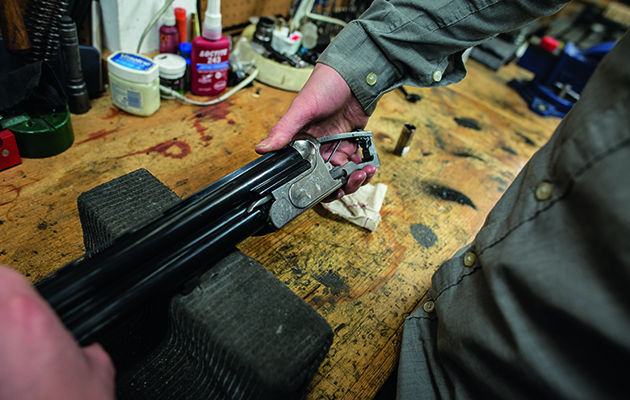
Hinge pins can become badly worn on over-and-under shotguns that have seen a lot of use
Safety first
With anything surrounding guns, always think safety first. It sounds obvious, but there should not be any ammunition in the shotgun or anywhere near where you are cleaning. Also, it’s best to carry out cleaning in a well-ventilated room when using any chemicals, particularly if they have a strong smell. They may seem unnecessary but gloves should be worn and Tom recommends the thin nylon variety so as to not impede your ability to get into all the little nooks and crannies.
Tools for cleaning a gun
As for tools, a proper cleaning kit is essential such as Hoppe’s Premium Universal Field Kit. However, you can use freebie castoffs from around the house because old t-shirts make good cleaning cloths for example, or a tooth brush is amazing at getting into fiddly little places that you would otherwise struggle to reach.
After returning from a long day’s shoot, the last thing you feel like doing is cleaning your shotgun. However, taking only 20 minutes to give it a quick clean can prevent horrible complications further down the line and ultimately provide a smoother and more enjoyable shooting experience. Tom summed up by saying: “A little bit of effort can ultimately prevent a whole host of issues. Regular maintenance will give a gun the best start in life.”
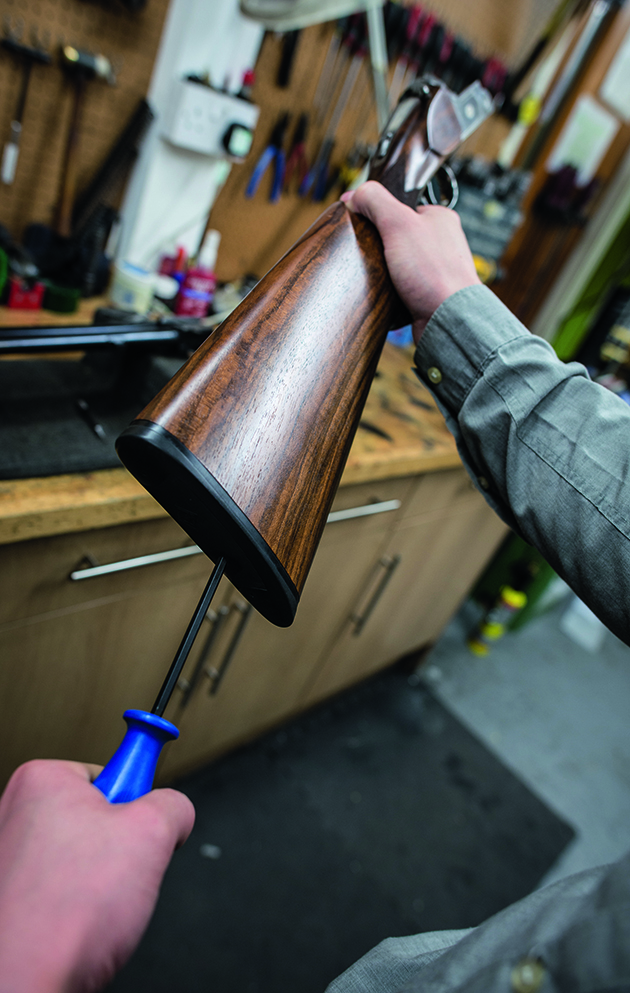
Always have the right tools for the job. A set of gunmakers screwdrivers is essential
Related Articles
Get the latest news delivered direct to your door
Subscribe to Shooting Times & Country
Discover the ultimate companion for field sports enthusiasts with Shooting Times & Country Magazine, the UK’s leading weekly publication that has been at the forefront of shooting culture since 1882. Subscribers gain access to expert tips, comprehensive gear reviews, seasonal advice and a vibrant community of like-minded shooters.
Save on shop price when you subscribe with weekly issues featuring in-depth articles on gundog training, exclusive member offers and access to the digital back issue library. A Shooting Times & Country subscription is more than a magazine, don’t just read about the countryside; immerse yourself in its most authoritative and engaging publication.







